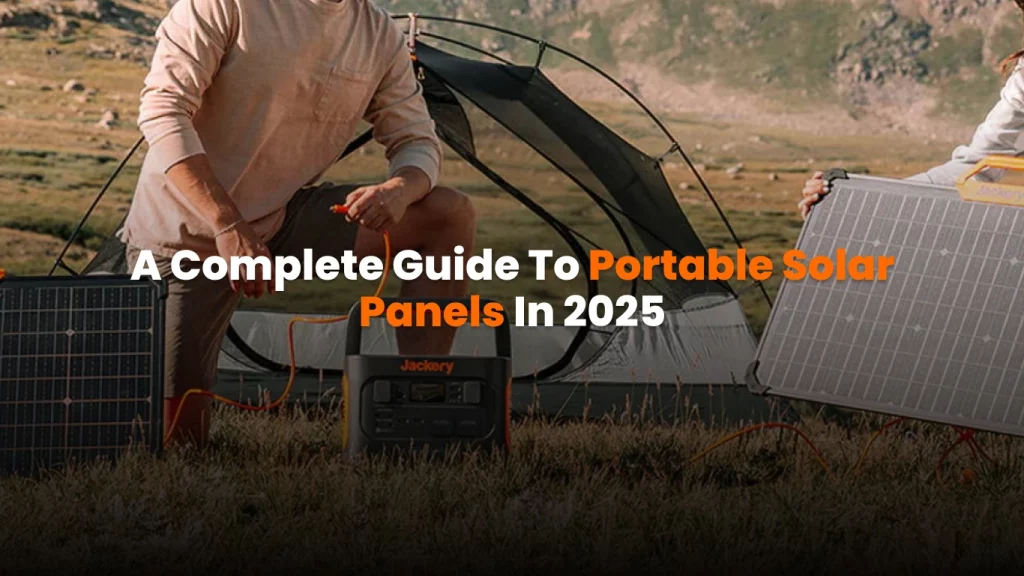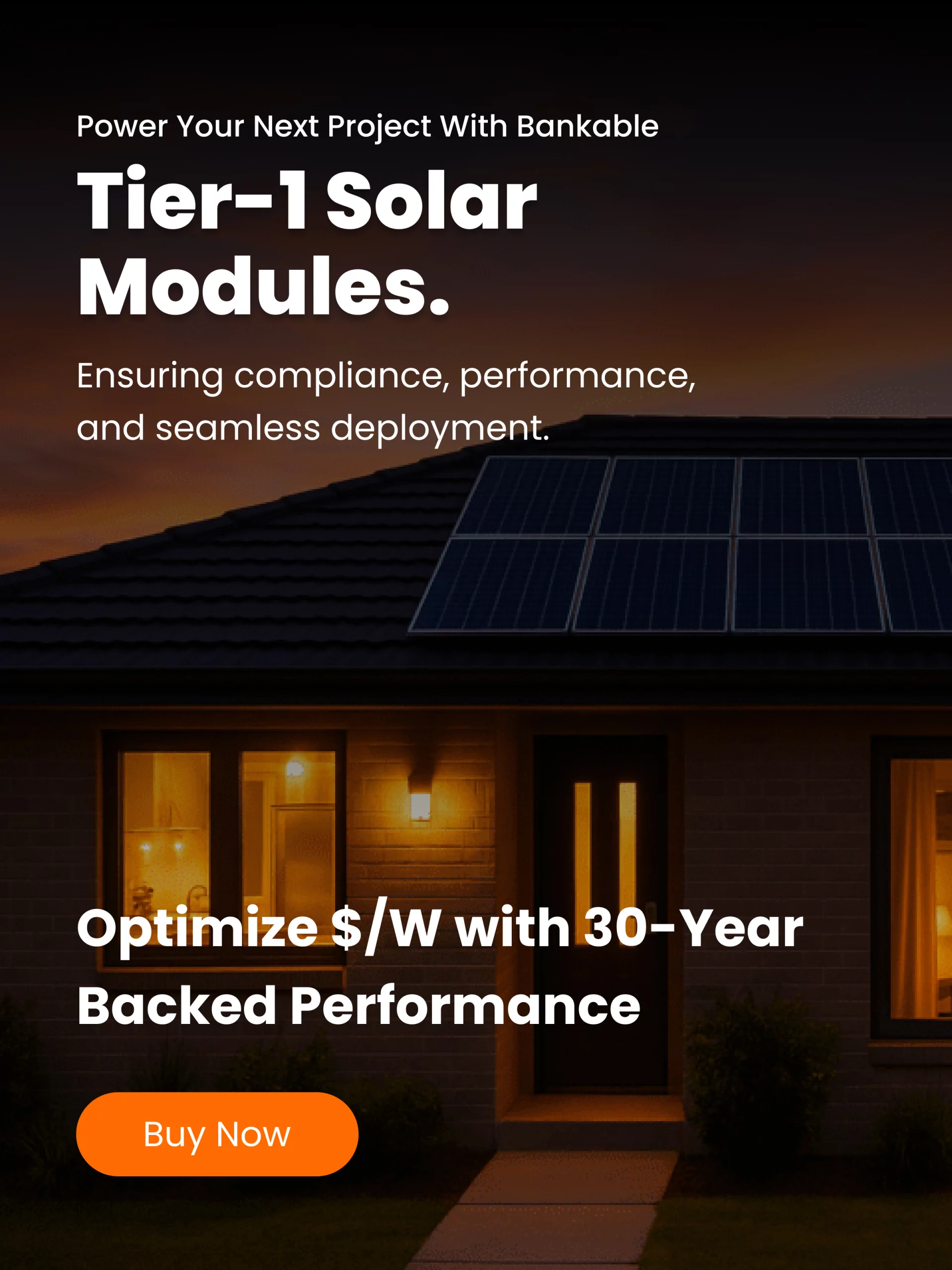Solar energy is no longer limited to rooftop systems or large solar farms. Today, portable solar panels are transforming how people access clean energy, whether for camping, road trips, RV living, or even emergency backup power. These lightweight and versatile devices make it possible to generate renewable electricity anywhere the sun shines.
As the technology has advanced, portable solar panels have become more efficient, more durable, and easier to use. But if you’re thinking about buying one in 2025, it’s important to understand what they are, how they work, and what features to look for. Let’s break it all down in this complete guide.
What are portable solar panels?
Portable solar panels are compact, lightweight solar modules designed to be easily moved and set up in different locations. Unlike rooftop solar systems, which are permanently installed, portable panels are foldable or suitcase-style units that can be carried by hand, stored in a vehicle, or packed for outdoor use.
They work the same way as traditional solar panels: photovoltaic (PV) cells capture sunlight and convert it into electricity. However, portable models are designed with convenience in mind. Many include built-in handles, foldable designs, and compatibility with batteries or power stations, making them a practical choice for travelers and off-grid enthusiasts.
Why portable solar panels are popular in 2025
The rise of portable solar panels reflects a shift in how people view renewable energy. In 2025, more households and travelers are looking for ways to stay powered without relying on gas generators or unstable grids. Several factors drive this popularity:
- Energy independence – Portable panels allow you to generate electricity wherever you are, reducing dependence on fuel-based generators.
- Eco-friendly solution – Unlike generators, solar panels produce no noise or harmful emissions.
- Emergency preparedness – With extreme weather events and power outages becoming more common, many households keep portable panels as part of their backup power strategy.
- Cost savings – While portable panels are smaller than rooftop systems, they still offset costs by charging devices and reducing reliance on traditional electricity sources when traveling.
Types of portable solar panels
Not all portable solar panels are the same. Understanding the main types helps you choose the right one for your needs:
- Foldable panels: These are designed like a book or a suitcase, folding down into a compact size for easy storage. They’re popular for camping and road trips.
- Briefcase-style panels: Made with rigid frames, these panels fold together like a suitcase and often come with kickstands. They’re durable and efficient but slightly heavier.
- Flexible panels: Built with lightweight materials, flexible panels can bend and adapt to curved surfaces, such as RV roofs or tents. However, they may be less durable than rigid models.
Each type has advantages. For example, foldable panels are ultra-portable, while rigid panels often provide higher efficiency and durability.
Key features to look for
When shopping for portable solar panels in 2025, consider these features to make the most of your investment:
- Wattage output: Panels are rated by wattage, usually between 50W and 400W. Higher wattage means faster charging and more power for larger devices.
- Compatibility: Check whether the panel connects easily to your power station, battery, or devices. Many panels come with adapters for different systems.
- Efficiency rating: Look for monocrystalline panels, which are more efficient than polycrystalline and perform better in limited sunlight.
- Durability: Portable panels are exposed to outdoor conditions. Weather-resistant materials, reinforced corners, and scratch-proof coatings increase lifespan.
- Weight and portability: If you’re hiking, lighter panels are better. If you’re using them for RV or car camping, weight may matter less than durability.
- Built-in features: Some panels include USB ports, stands, or carrying cases for added convenience.
How to use portable solar panels
Using portable solar panels is straightforward, but maximizing efficiency requires understanding the basics:
- Set up in direct sunlight: Shaded areas or cloudy conditions reduce output.
- Angle the panel correctly: Panels should face the sun directly. Some models come with kickstands to help optimize positioning.
- Connect to a power station or device: Most people pair portable panels with solar generators, which store energy in batteries for later use. Panels can also charge devices directly if equipped with USB ports.
- Monitor output: Many modern systems include mobile apps or displays showing how much energy your panel is generating.
With proper use, portable solar panels can power laptops, phones, portable fridges, lights, and even small appliances.
Pros and cons of portable solar panels
Like any technology, portable solar panels have strengths and limitations.
Pros:
- Clean, renewable energy source.
- Lightweight and easy to carry.
- Quiet operation compared to gas generators.
- Useful for emergencies and off-grid trips.
- No recurring fuel costs.
Cons:
- Limited output compared to full rooftop systems.
- Performance depends on sunlight availability.
- May require a compatible battery or power station for best results.
- Higher upfront cost compared to traditional chargers or generators.
Cost of portable solar panels in 2025
As of August 2025, portable solar panels vary widely in price depending on size and features:
- Small panels (50–100W): Around $100–$200.
- Medium panels (100–300W): Typically $250–$500.
- Large panels (300–400W): $600–$1,000 or more.
Bundles that include both a panel and a power station can cost upwards of $1,200, but they provide a complete off-grid energy solution. Prices have come down compared to a decade ago, thanks to advances in solar cell efficiency and manufacturing.
Best uses for portable solar panels
Portable solar panels are versatile and fit many scenarios:
- Camping and hiking: Keep phones, lights, and GPS devices charged in remote areas.
- RV and van life: Power appliances, fans, and electronics without needing hookups.
- Emergency backup: Provide energy during blackouts or natural disasters.
- Outdoor events: Festivals, tailgates, and picnics benefit from off-grid power.
- Boating: Keep marine batteries charged while out on the water.
The flexibility of portable solar panels makes them a practical tool for anyone seeking reliable, clean energy on the go.
Final Thoughts
Portable solar panels are a smart investment for anyone who values independence, sustainability, and convenience. They’re perfect for outdoor adventures, road trips, and emergency preparedness, offering a reliable way to generate clean electricity without relying on fuel.
As of 2025, the technology is more efficient, affordable, and user-friendly than ever. Whether you’re a camper, traveler, or homeowner looking for backup energy, portable solar panels provide a versatile solution that brings the power of the sun wherever you need it most.




